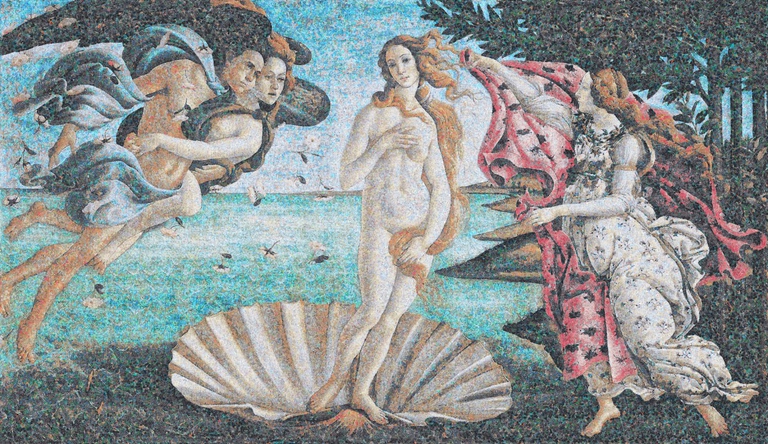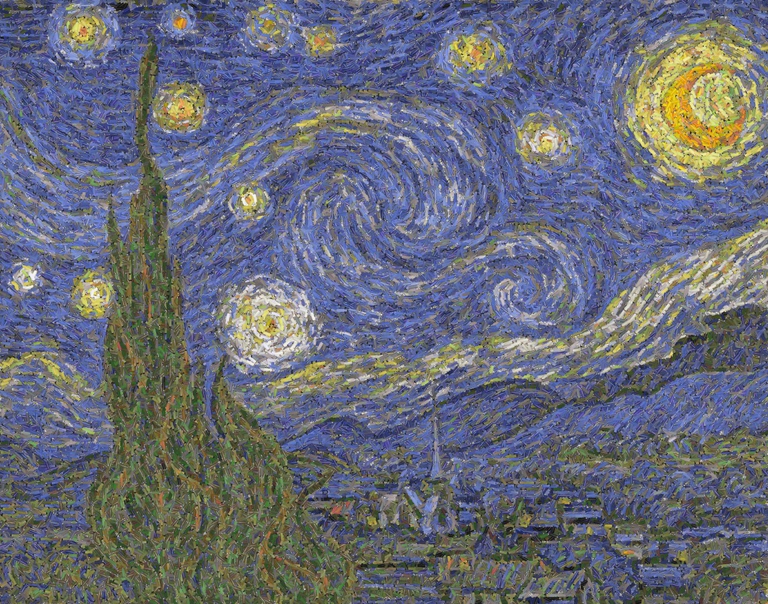
As per tradition after 12 years India held Mahakumbh, the world’s largest spiritual congregation that has been attracting pilgrims from across the globe.
Il fotografo Chris Jordan ci fa visualizzare le conseguenze delle nostre azioni sul Pianeta. Le foto di Running the numbers ci fanno capire che, come un tassello di un mosaico, ognuno di noi ha il proprio ruolo nel mondo.
Every day we find ourselves dealing with numbers: an infinite series of figures representing and defining the mechanisms of our lives and the world that surrounds us. We count in thousands, millions, billions, and now even in trillions. These figures should tell us about our lifestyles and mass phenomena taking place on a global scale but in the end they don’t really speak to us. When we read that 8 million tonnes of plastic end up in the ocean every year or 50 billion plastic bottles are used every year in the United States alone, do we really know how much that is? Is our mind able to visualize such a huge amount?
Finding meaning in global mass phenomena can be difficult because the phenomena themselves are invisible, spread across the earth in millions of separate places.Chris Jordan
Questioning how the human mind perceives large numbers, which define the world’s big issues, is the starting point of the project Running the Numbers of American photographer and artist Chris Jordan. Its aim is to tell the enormity, and gravity, of the global problems we face today, while trying not to use the “anaesthetizing and emotionally barren” language of statistics. This is because if we don’t understand those figures we don’t understand the problem and, simply, we disconnect from it and we don’t feel it as ours or even real. To do so, Jordan uses numbers, but he merges them with photography and arts.
The result is a series of images created by assembling lots of other small photos, like a collage. We can thus admire a series of two-level images: classic artworks that, when seen up close, are nothing but a mosaic of our irrational use of objects. The project started in 2006 and was focused on the consumerist culture of the American society: the number of cars bought, cigarettes smoked, trees cut for paper. Over the years, the photographer’s attention moved towards the impact our actions have on the Planet, thus focusing on one of the most urgent issues of our times: plastic.
Every image contains an element, an iconic object of our culture that, when repeated hundreds of times, gives life to an artwork that tells us about a specific quantity of something. There’s Botticelli’s Venus made with 240,000 plastic bags – the amount used every ten seconds across the world; The Great Wave of Japanese artist Hokusai made with 2.4 million pieces of plastic (collected from the Pacific ocean) which represent the pounds of plastic that end up in the world’s ocean every hour; and A Sunday Afternoon by French artist Seurat, made with 400,000 caps representing the number of plastic bottles used every hour in the United States alone.
And every object depicted has a link with the broader image. For example, in Van Gogh’s Starry Night, the iconic vortex looks like the currents in the Pacific Ocean, “as if Vang Gogh already knew about the Pacific Garbage Patch“. Also, the small village is a reminder that even if we live inland, our plastic can contribute to polluting and chocking our oceans.
Read also: The documentary Albatross shows how we need to reconnect to nature to overcome our plastic culture
Getting closer to these problems and starting to understand their extent, however, leaves us paralysed. We feel overwhelmed as we think we can’t actually make a difference. “There’s something true in it because we’re too small to make a difference,” Jordan explains. “But at the same time, it’s a paradox, because hundreds of millions of people that together think they make no difference generate a catastrophe. And that’s exactly what we’re in now”.
And this is the heart of the matter. “If I added one more tap, plastic bag or lighter in one of these images, no one would notice. But if I took one out, you would see an empty space”. Every one of us, with our role and in our place, makes a contribution. To understand that, we need to reconnect with global problems that are too often caused by us. Then we just have to embark on the journey of giving a sense to our smallness compared to the enormity of our world. A smallness that, in the end, is a real power.
Siamo anche su WhatsApp. Segui il canale ufficiale LifeGate per restare aggiornata, aggiornato sulle ultime notizie e sulle nostre attività.
![]()
Quest'opera è distribuita con Licenza Creative Commons Attribuzione - Non commerciale - Non opere derivate 4.0 Internazionale.
As per tradition after 12 years India held Mahakumbh, the world’s largest spiritual congregation that has been attracting pilgrims from across the globe.
Workers in tea gardens of West Bengal, India, that produces Ctc tea for domestic consumption complain that they have been devoid of basic facilities while political parties make hollow promises during every elections which are never fulfilled.
India is in the middle of the elections, but sadly none of the politicians have uttered a word on man-animal conflict that has been devouring several lives every year.
Manipur, a state in north-east India, is still reeling under the tremors of violence that broke out last year devouring lives and paralyzing the economy.
The government of Tanzania is currently planning to evict more than 80.000 indigenous Maasai people from their ancenstral land
A new UNU-INWEH report on the global bottled water industry reveals the massive scale of this market and the lack of strict quality controls.
Isatou Ceesay founded a social enterprise that is helping to fight plastic pollution and empowering women and young people to gain economic independence.
In 2020, Mihela Hladin made a radical decision that many, in recent times, have probably considered. This is her story, with photos by Matt Audiffret.
The Brazilian government has started evicting illegal gold miners, responsible for the health emergency that has hit the Yanomami people.









